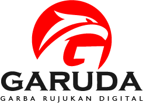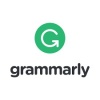PEMANFAATAN FUNGSI MUSEUM SEBAGAI SUMBER BELAJAR SEJARAH DALAM MENGEMBANGKAN KEMAMPUAN BERPIKIR KRITIS
Okta Evitasari(1*), Lelly Qodariah(2), Rudy Gunawan(3),
(1) Sekolah Pascasarjana Uhamka
(2) Sekolah Pascasarjana Uhamka
(3) Sekolah Pascasarjana Uhamka
(*) Corresponding Author
Abstract
This research uses a descriptive qualitative method with a case study approach
where the researcher searches and collects resources in the form of information
and data about the use of museums as a source of historical learning, which in
turn provides descriptive data in the form of words, writing of objects observed
by researchers. The data used in this study comes from sources, places (museum buildings and collections) and documents. Data collection techniques used in this study were interviews, observation and document analysis. In this study, researchers used source triangle measurement by searching data through more than one informant related to the use of the museum's role as a source of historical learning. The results showed that the museum can motivate students and make students easy in the learning history process. The visit to the museum is something that deserves to be considered as a source of visual learning for
students. A visit to the history object is expected to change the assumption that
students studying history are not boring and satiating, but something interesting
and fun. On the basis of the findings in the field of SMA Negeri 5 Depok, the use
of the museum as a learning source is indeed not yet optimal, due to various
factors such as the lack of broad socialization to schools and the limited reach of
the museum, which is an obstacle to National Awakening Museum in an effort to
make the museum as a means to study history.
Keywords: learning materials, students, museums
Full Text:
PDFReferences
Agung, Leo. Dan Wahyuni, Sri. (2013). Perencanaan Pembelajaran Sejarah. Yogyakarta: Ombak.
Arianti, Esther. Relevansi Pembelajaran Sejarah Kebudayaan Indonesia dengan Peninggalan Sejarah sebagai Sumber Belajar. Surakarta: UNS, (2003).
Bahari, Yohanes. “Karl Marx: Sekelumit tentang Hidup dan
Pemikirannya.” Jurnal Pendidikan Sosiologi dan Humaniora, (2010).
Barry Kevin, Len King. Beginning Teaching A Development Text for Effective Teaching. New York: Science Press, (2004).
E. Mulyasa. (2005). Menjadi Guru Profesional. Bandung: PT. Remaja Rosda Karya.
Ensiklopedia Ictiar-Van Houve. (1980). Bandung: Van Hoeve Bandung.
Filsaime. Menguak Rahasia Berpikir Kritis dan Kreatif. Jakarta: PT.
Prestasi Pustakaraya, (2007).
Filsaime, Dennis K. Menguak Rahasia Berpikir Kritis dan Kreatif.
Jakarta: Prestasi Pusaka, (2008).
Fisher. Berpikir Kritis sebuah Pengantar. Jakarta: Erlangga, (2008).
Fristanti, Indriana. “Peningkatan Kemampuan Berpikir Kritis Pada
Pelajaran IPS Sejarah dengan Pembelajaran Berbasis Masalah
Pada Siswa MTs Nahdlatul Ulama Malang.” Universitas Negeri
Malang, (2011).
Gordon, B. Intellegent Memory: A Prescription for Improving Your Memory. New York: Penguin Books, (2003).
Gunawan, Rudy. Pendidikan IPS: Filosofi, Konsep dan Aplikasi.
Bandung: Alfabeta, (2013).
DOI: https://doi.org/10.30998/je.v1i1.462
Article Metrics
 Abstract Views : 2922
|
Abstract Views : 2922
|  PDF Views : 9801
PDF Views : 9801
Refbacks
Program Studi Pendidikan Sejarah
Universitas Indraprasta PGRI
Address:
Journal of Social Sciences and Humanities is licensed under a Creative Commons Attribution 4.0 International License.












